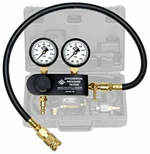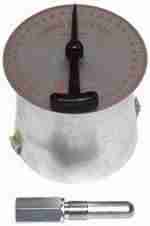Building your own aircraft is exciting. It requires passion, skill, and the right tools. Choosing aircraft maintenance tools for home builders can feel overwhelming, but this article will guide you through the essentials. Learn about their uses and make informed decisions for your project. We’ll also cover crucial factors to consider so you can create a well-equipped workspace. Whether assembling a kit plane or tackling a from-scratch build, this guide is for you.
Table of Contents:
- Essential Aircraft Maintenance Tools Home Builders Need
- Additional Tips for Selecting and Maintaining Tools
- FAQs About Aircraft Maintenance Tools Home Builders Use
- Conclusion
Essential Aircraft Maintenance Tools Home Builders Need
The tools you’ll need depend on your aircraft’s construction type (wood, metal, composite), but some are universally essential. These are your building blocks for success, from basic hand tools to specialized equipment:
Riveting Tools:
These are crucial for metal aircraft, used to attach aluminum sheets. Investing in quality riveting tools is worthwhile. They create a structurally sound aircraft.
-
Rivet Gun Kit: This is essential for driving rivets. Choose from manual, pneumatic (air-powered), or cordless options. Kits usually include the gun, rivet sets, and a case. The Home Builders Tool Kit 4X on eBay is a recommended option.
-
Pneumatic C Squeezer: This tool is a game-changer for sheet metal work. Aircraft Spruce offers the Pneumatic C Squeezer Kit (p/n 12-03504) for smoother riveting. While a significant investment at $700-800, it ensures consistent quality in a metal build.
-
Rivet Sets and Bucking Bars: You’ll need rivet sets matching your rivet sizes for proper setting. Bucking bars provide support behind the rivet during installation. The Air Capital 5-Piece Rivet Set Kit is an essential purchase.
-
DRDT-2 Rivet Dimpler: For flush rivets in metal aircraft, Aircraft Spruce offers the DRDT-2 Dimpler (p/n 12-00907). This gold-standard tool is priced at $545.
Drilling and Cutting Tools
Whether using wood, metal, or composite, you’ll need to make holes and cut materials. This is where precision and safety are paramount.
-
Drill Bits: Keep a variety of sizes, including high-speed steel (HSS) bits for metal and brad-point bits for wood. It’s wise to have extras on hand.
-
Aviation Snips (straight and left/right cutting): Also called tin snips, these are essential for cutting aluminum sheets. Irwin’s 21304ZR long-nose snips are popular for aircraft maintenance.
-
Deburring Tool: This tool smooths rough edges after drilling or cutting, creating a safer product. Homebuilders favor the 3M Scotch-Brite Deburring Wheel (p/n 09-05641) with a 6-inch bench grinder and stand from Harbor Freight Tools.
-
Hole Saws: Use these for larger holes. An assortment is best for home building projects.
-
Files: Having various files, from metal files to wood rasps, will be beneficial. They shape, refine, and deburr edges. An assortment of files is a staple among aircraft maintenance tools home builders own.
Measuring and Marking Tools
Precision matters in aircraft building, so you’ll frequently use these tools:
-
Rulers (steel and flexible): A high-quality stainless steel pocket ruler is critical. These are available in standard, metric, and combination units. Ensure your ruler matches the measurement system used in your aircraft plans.
-
Tape Measures: Invest in a long tape measure, at least 25 feet, for fuselage measurements.
-
Calipers (dial and digital): Digital calipers offer easy reading, while dial calipers, though requiring careful reading, have fewer breakable parts.
-
Scriber: This tool creates precise lines for cutting or drilling. It’s a top priority for aircraft maintenance tools home builders require.
-
Levels: A small torpedo level and a longer level are necessary for various assemblies and installations.
-
Protractor/Angle Finder: This tool measures precise angles during fabrication. Many modern angle finders have digital readouts.
-
Machinist Square: This tool ensures accurate 90-degree angles in your work.
Clamping and Holding Tools
Keeping parts aligned is crucial during assembly:
-
Clamps (C-clamps, bar clamps, spring clamps, quick grips, etc.): Having various sizes and types is essential. Don’t forget the “helping hands” soldering aid for intricate tasks.
-
Vise: Mount a vise to your workbench to hold parts securely. Vises with swivel bases offer more flexibility.
-
Cleco Fasteners and Pliers: Cleco fasteners temporarily hold sheet metal parts together before riveting. They act as extra hands during alignment. A quality Cleco Kit with various sizes is essential.
Wiring Tools:
Electrical work requires specific tools for safety and reliability. Use these tools to ensure your aircraft’s electrical system is sound.
-
Wire Strippers and Cutters: High-quality strippers that handle various wire gauges are vital. Sharp tools ensure cleaner, easier stripping.
-
Crimping Tool: Using the correct size crimping tool for terminals prevents shorts and secures connections. A good ratcheting crimping tool is recommended.
-
Soldering Iron and Solder: This duo is essential for splicing wires and soldering terminal ends. Choose a soldering iron with adjustable temperature settings.
-
Heat Shrink Tubing: This insulates connections, creating a professional look.
-
Multimeter: Use a multimeter to check continuity, voltage, and amperage. While some multimeters offer advanced functions, a basic model is suitable for homebuilt aircraft.
-
Label Maker: Properly label wires for easier troubleshooting. A quality label maker with durable labels is recommended. The Labelworks LW-PX350 from Aircraft Spruce is a popular choice.
Safety Equipment:
Protect yourself with the appropriate gear. Safety should always be a top priority during your build.
-
Safety Glasses: Always wear eye protection when using power tools to prevent injuries from metal or wood debris.
-
Gloves: Wear cut-resistant gloves when handling sheet metal and chemical-resistant gloves for resins or adhesives.
-
Hearing Protection: Protect your hearing from loud tools, such as rivet guns and drills, by wearing earplugs or earmuffs.
-
Respirator: When using materials that produce fumes, like epoxy resins, a respirator with an organic-vapor cartridge is crucial.
-
Fire Extinguisher: Keep a fire extinguisher rated for Class A, B, and C fires nearby.
Specialized Tools for Specific Needs
Consider these tools based on your project requirements:
-
Pneumatic Rivet Squeezer: Ideal for high-quality rivets in tight spaces, this tool is a must-have for metal homebuilt aircraft.
-
Sheet Metal Brake: This allows precise bends in sheet metal, letting you create custom panels and shapes.
-
Adel Clamp Pliers and Awl: Specifically for Adel clamps, which secure cables in aircraft, these tools simplify installation. Find them at Aircraft Spruce and Wicks Aircraft.
-
Safety Wire Pliers: Use these pliers to twist and secure safety wire on nuts and bolts. SkyGeek recommends 8-inch Safety Wire Twist Pliers for their versatility.
-
Tube Bender (if applicable): If your project involves steel tube construction, a tube bender is necessary for accurately bending tubing.
Workshop Organization
Aircraft building involves many small parts. Good storage is crucial. Choose an organizational system that suits your needs.
-
Parts Organizer/Bin Rack: These keep your workspace tidy and parts accessible. Aircraft Spruce offers a wide selection. The 74-bin double-sided model from Harbor Freight is popular among homebuilders.
Additional Tips for Selecting and Maintaining Tools
Prioritize Quality
High-quality tools are crucial for aircraft building as they directly impact safety. Low-quality tools can lead to failures. Buy from reputable aviation suppliers and read reviews. Look for tools that other aircraft maintenance tools home builders trust and recommend.
Maintenance is Essential
Clean your tools regularly and apply light oil to moving parts to extend their lifespan. Wipe off debris and keep your workspace clean and organized.
Invest Gradually
You don’t need to buy every tool immediately. Acquire tools as your project progresses. Don’t hesitate to rent specialized tools only used for specific tasks.
Research for Your Needs
Your aircraft plans will list the required tools. Research before purchasing. Aircraft Spruce and SkyGeek are valuable resources for aviation-specific tools. Aircraft kit manufacturers may offer complete tool kits tailored to specific models, potentially saving you money.
FAQs About Aircraft Maintenance Tools Home Builders Use
Can You Do Your Own Aircraft Maintenance?
The legality of performing your own aircraft maintenance as a homebuilder depends on local regulations. Research the guidelines in your area. Some locations allow it, especially for experimental aircraft, but strict rules apply. For example, even if permitted to work on your aircraft, the first annual inspection may require an FAA-certified mechanic.
Certain repairs or inspections may necessitate a certified mechanic’s involvement, even if you can handle basic maintenance. In other regions, specific tasks can be done under the supervision of a licensed mechanic. Ultimately, it depends on the regulations and aircraft type.
What Are The Essential Hand Tools That Every Aviation Maintenance Technician Should Have in Their Toolbox?
Aviation maintenance technicians need an extensive set of tools. SkyGeek.com provides a comprehensive list in a blog post, categorizing tools into wrenches, sockets, screwdrivers, pliers, cutting tools, safety wire tools, torque wrenches, hammers, measuring devices, inspection tools, electrical tools, fluid handling tools, and PPE.
Professional mechanics need a wider range of tools to service various aircraft types. Having specialty tools, such as borescopes and cylinder pressure testers, is essential for engine work.
What Are the Basic Hand Tools for Aircraft?
The basic tools you need will vary based on your project, but here’s a starting point:
- Combination Wrenches (metric and/or standard): For tightening and loosening nuts and bolts.
- Ratcheting Socket Wrench Set: A quality set with shallow and deep sockets is essential for faster installations.
- Screwdrivers: Have a set of Phillips and slotted screwdrivers, along with nut drivers.
- Needle Nose Pliers and Diagonal Cutting Pliers: Both are handy for small components.
- Aviation Snips: For precise aluminum cutting.
- Ball Peen Hammer: Used for shaping soft metal and peening rivets.
- Deburring Tool: Essential for smoothing rough edges after cutting.
- Drill Bits and a Variable-Speed Drill: A cordless drill is useful in tight spaces. Choose a variety of drill bits for different hole sizes and materials.
| Aircraft Engine Inspection and Testing Instruments |  Aircraft Tool Supply Eastern Magneto Synchronizer Aircraft Tool Supply Eastern Magneto Synchronizer |

Aircraft Tool Supply Magneto Synchronizer (Single Deluxe) |

Aircraft Tool Supply Eastern Differential Cylinder Pressure Tester |

Aircraft Tool Supply Aircraft Timing Indicator |

Aircraft engine inspection and testing complete kit |
What Tools Do Aviation Inspectors Use?
Aviation inspectors use specialized tools beyond those used by homebuilders. For inspecting airframe structures and powerplants, they utilize equipment like the Aircraft Tool Supply Magneto Synchronizer for timing engines with magnetos. The Aircraft Tool Supply Eastern Differential Cylinder Pressure Tester ensures consistent cylinder compression during inspections. Additionally, the Aircraft Tool Supply Aircraft Timing Indicator plays a vital role in complete aircraft assessments.
Always prioritize safety when selecting and using aircraft maintenance tools. High-quality tools may cost more but reduce the risk of accidents or rework. Remember to inspect tools and fasteners for wear and damage regularly.
Conclusion
Building an aircraft requires careful planning, especially when choosing the right tools. By understanding the essential tool types and considering your project needs and safety, you can create a well-equipped workspace and enjoy the rewarding experience of building your own aircraft.
